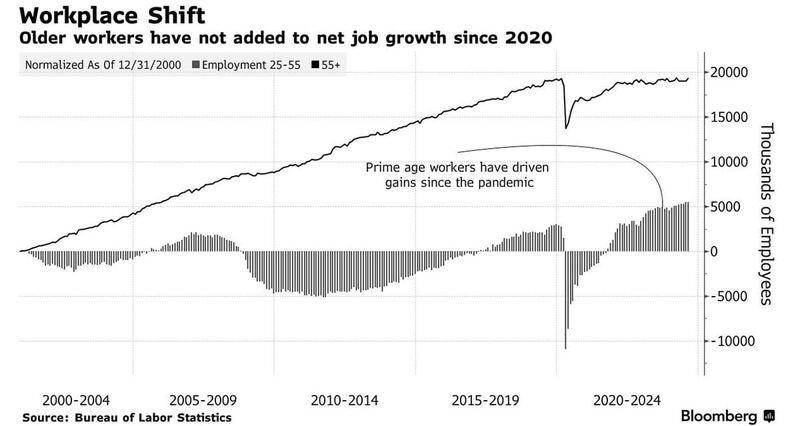3 MIN READ
Does the Cost of Construction Labor Ever Fall?
- Commercial Real Estate Insights
5 MIN READ
October 07, 2024

I wrote a blog three weeks ago, Does the Cost of Construction Labor Ever Fall?, arguing that outsized immigration over the last three years or more could drive down construction costs. Almost one-third of construction labor is foreign-born, and nearly 60% of unauthorized immigrants are male. The massive slowdown of private construction is directly tied to higher interest rates starting in 2022. At the same time, we had unprecedented immigration, especially from those who would find employment in the construction sector. The argument can be that the labor supply will outweigh the demand, with more people looking for work and decreasing labor costs.

I want to introduce a few counterarguments to this thesis.
1) Older workers left the workforce in droves in 2020.
Four-fifths of the workers who left the workforce since 2020 were over 55, 15 years shy of the typical retirement age. I suspect many of these retirees had a large enough nest egg to quit and enjoy an early retirement. It is also likely that an outsized number of retirees were spouses whose partners were still working and had household incomes plus savings that allowed for a comfortable life.
The over 55-year-old workers who left the construction industry were not pouring concrete or stuccoing buildings. That work is for the younger, healthier, and hungrier workers. The construction professionals who did leave were the site superintendents and the city senior inspectors, who took decades of institutional knowledge with them. These skills took a career to build and are not replaced by someone in the industry with a handful of years under their belt. Look for the site superintendents next time you're on a construction site. I would bet money they are in their late 50’s and early 60’s. These are the people that get buildings built. They are not pencil pushers. In my opinion, a seasoned superintendent is the most critical person for successful construction.
2) Workers entering the labor force are more educated than ever, and construction is undesirable.
Despite the unbelievable college education costs, the number of Americans getting bachelor's degrees has steadily increased for a century. These workers are not going into construction unless it's an office job as a project manager. They are skipping all jobs involving manual tasks in lieu of anything involving a computer. Degreed individuals who enter construction often have an affinity for building, and it's likely to run in the family if a kid wants to own his own construction company; it's hard to start at the bottom and work their way up. It's a lot easier if a parent is training them to take over. Construction is losing to tech jobs.
3) The upcoming workforce is migrating to non-traditional and vocational careers.
Let’s face it, Gen-Z is the most technologically savvy generation. The tech industry is advancing exponentially and it has been a cornerstone of their lives ever since they were babies. They don't know and can't imagine a world without advanced technology. Growing up surrounded by smartphones, tablets, and computers, they have a natural affinity for technology. They've been navigating online platforms, learning to code, and exploring the limitless possibilities of artificial intelligence as entertainment.
This generation is looking for alternatives to massing huge debts to pay for the high cost of higher education. While many may fantasize of making it big as a social media influencer or a world-traveling content creator, a large part of this generation is seeking out affordable vocational training that does not require a bachelor's degree. Job openings for IT professionals in cybersecurity or AI project management are the most in-demand jobs. For generations we told our kids that a college degree was required for a good job, which is not totally true anymore. While I’m not suggesting there are no Millennial construction workers, I’m pointing out that they, along with Gen-Z, have a broader selection of career options than given to the older generations.

Immigration could absolutely drive construction costs down due to more laborers entering the US economy than in the past decades. Still, there are important factors that could wipe out the “gain” of construction workers, too. Baby boomers and older Americans have left and are leaving the workforce in droves. With student debt and more educated young people in the country than ever, swinging a hammer is not an attractive career option. Our youngest generation lives in a technologically advanced world that does not immediately lend itself to replenishing the construction workforce. While we wait to see the numbers come to fruition over the next decade, immigration may help provide more workers, but it may not solve the problem of Americans being less likely to enter that sector.
LOAD MORE
3 MIN READ
3 MIN READ
4 MIN READ
LOAD MORE